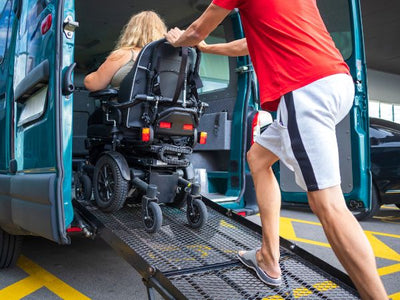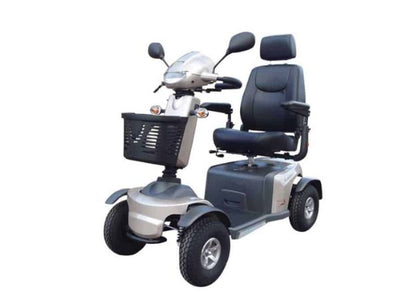What is the NDIS?
The National Disability Insurance Scheme (NDIS) is a government initiative dedicated to helping individuals with disabilities through financial support. The NDIS offers financial support to individuals who qualify for disability assistance, enabling them to spend more time with their loved ones, attain increased independence, access new skills, pursue employment or engage in volunteering within their community, and enhance their overall quality of life. Additionally, the NDIS serves as a vital link between people with disabilities and various community services. This encompasses facilitating connections with doctors, community groups, sports clubs, support networks, libraries, and schools.

Is impairment from a medical condition or disease covered by the NDIS?
Yes, a person is covered by the NDIS if their medical condition can about through birth, disease, injury, or accident. However, to be eligible the disease or medical condition must have caused permanent impairment and significant disability in some form (be it physical, cognitive, visual, hearing, psychosocial, etc).
Which medical conditions meet the requirements?
If you have been diagnosed with the following medical conditions, you are more than likely able to meet the disability requirements of the NDIS. However, it is always best to find out first as some conditions may apply.
- Intellectual disability diagnosed and assessed as moderate, severe, or profound in accordance with current DSM criteria.
- Autism diagnosed by a specialist multi-disciplinary team, paediatrician, psychiatrist or clinical psychologist experienced in the assessment of Pervasive Developmental Disorders, and assessed using the current Diagnostic and Statistical Manual of Mental Disorders (DSM-V) diagnostic criteria as having severity of Level 2 (Requiring substantial support) or Level 3 (Requiring very substantial support).
- Cerebral palsy diagnosed and assessed as severe (e.g. assessed as Level 3, 4 or 5 on the Gross Motor Function Classification System - GMFCS).
- Genetic conditions that consistently result in permanent and severe intellectual and physical impairments:
- Angelman syndrome
- Coffin-Lowry syndrome in males
- Cornelia de Lange syndrome
- Cri du Chat syndrome
- Edwards syndrome (Trisomy 18 – full form)
- Epidermolysis Bullosa (severe forms): YR, Autosomal recessive dystrophic epidermolysis bullosa, Hallopeau-Siemens type, Herlitz Junctional Epidermolysis Dystrophica
- Lesch-Nyhan syndrome
- Leigh syndrome
- Leukodystrophies: Alexander disease (infantile and neonatal forms), Canavan disease, Krabbe disease (globoid cell leukodystrophy) – Infantile form, Pelizaeus-Merzbacher Disease (Connatal form)
- Lysosomal storage disorders resulting in severe intellectual and physical impairments: Gaucher disease Types 2 and 3, Niemann-Pick disease (Types A and C), Pompe disease, Sandhoff disease (infantile form), Schindler disease (Type 1), Tay-Sachs disease (infantile form)
- Mucopolysaccharidoses – the following forms: MPS 1-H (Hurler syndrome), MPS III (San Fillipo syndrome)
- Osteogenesis Imperfecta (severe forms): Type II - with two or more fractures per year and significant deformities severely limiting ability to perform activities of daily living
- Patau syndrome
- Rett syndrome
- Spinal Muscular Atrophies of the following types: Werdnig-Hoffmann disease (SMA Type 1- Infantile form), Dubowitz disease (SMA Type II – Intermediate form), X-linked spinal muscular atrophy
- Spinal cord injury or brain injury resulting in paraplegia, quadriplegia or tetraplegia.
- Hemiplegia where there is severe or total loss of strength and movement in the affected limbs of the body.
- Permanent blindness in both eyes, diagnosed and assessed by an ophthalmologist as follows:
- Corrected visual acuity (extent to which an object can be brought into focus) on the Snellen Scale must be less than or equal to 6/60 in both eyes; or
- Constriction to within 10 degrees or less of arc of central fixation in the better eye, irrespective of corrected visual acuity (i.e. visual fields are reduced to a measured arc of 10 degrees or less); or
- A combination of visual defects resulting in the same degree of visual impairment as that occurring in the above points. (An optometrist report is not sufficient for NDIS purposes.)
- Permanent bilateral hearing loss > 90 decibels in the better ear (pure tone average of 500Hz, 1000Hz, 2000Hz and 4000Hz).
- Deafblindness confirmed by ophthalmologist and audiologist and assessed as resulting in permanent and severe to total impairment of visual function and hearing.
- Amputation or congenital absence of 2 limbs – for example, 2 legs, 2 arms, or a leg and an arm (not a leg and a hand, or an arm and a foot).
For some medical conditions, the severity of the impairment needs to be demonstrated to evaluate whether the NDIS will cover it. Click here for the list.
What medical conditions are not covered?
The NDIS provides funding for permanent disabilities or diseases and will not provide funding for time-limited conditions. For example, if you are struggling with an injury that will resolve in time, you will not be covered.
If you’re unsure, click here for more details.
A disability should not limit your possibilities
At Equip U, we are committed to promoting independence and mobility for people with disabilities and we have some great options for mobility aids in Townsville. Unlike other retailers, we don't just offer standard products like mobility scooters and accessories. We also provide in-home trials to residents of Queensland, as well as maintenance and servicing for any mobility products. Our NDIS registration allows us to provide funding options so that access to these services isn't limited based on where you live. Our ultimate goal is to work closely with you to bring your vision for improved mobility to life.
If you have any questions about the types of products we offer or how they work, or if you would like to schedule a free at-home product demonstration, please don't hesitate to get in touch with us today.





